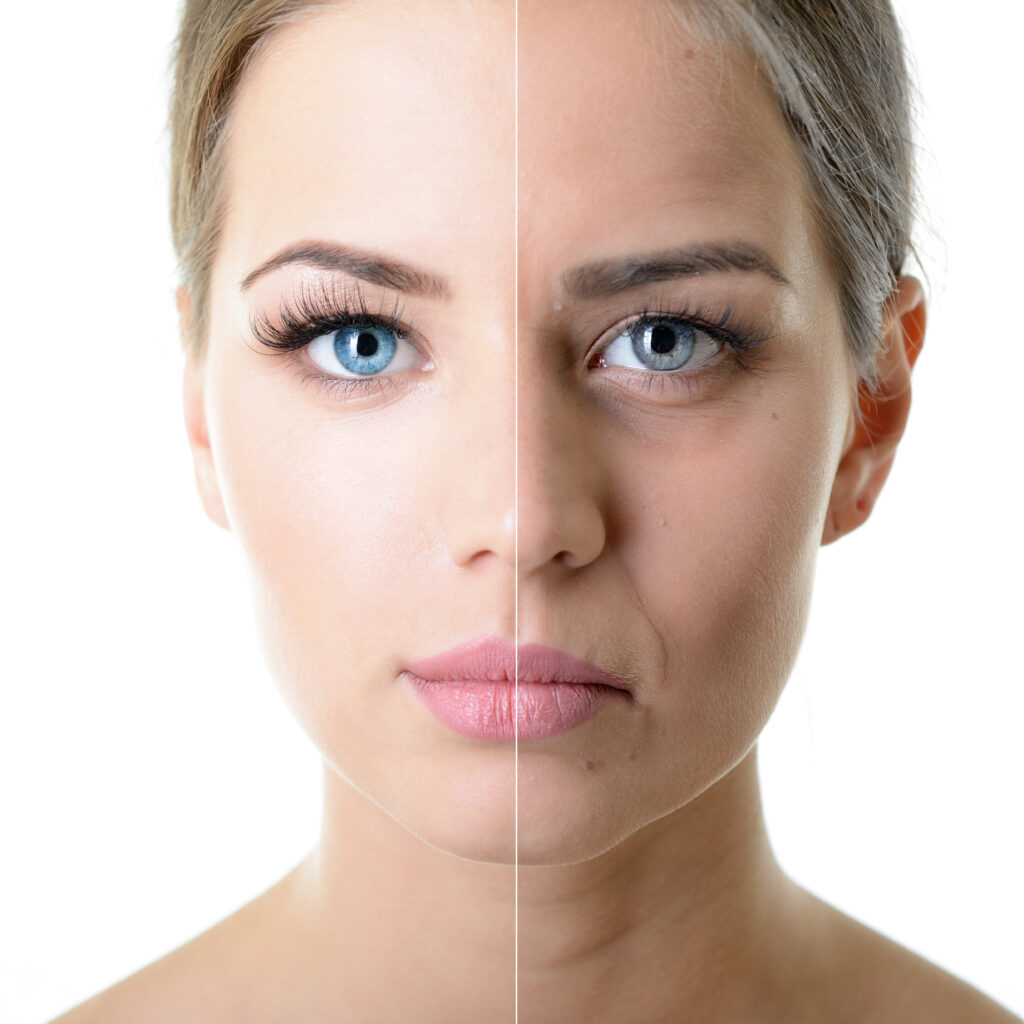
Reset Button
Don’t you wish skin had a reset button? Just press it and go back to the pristine skin of childhood. We know we won’t ever capture that beautiful baby-faced look, but we also know it’s possible to get improvement. We can give patients a youthful glow, minimize their fine lines and wrinkles, and improve their tone and texture.
Areas of Focus for Anti-Aging
There are three main areas to address when focusing on anti-aging. The first is speeding up the keratinization process (shedding of dead skin cells), the second is slowing down melanocyte (pigment producing cells) and vascular lesion (broken capillaries) production, and the third is preservation of facial structure through collagen and elastin stimulation (structural protein and connective tissues). Let me break it down for you.
Speeding Keratinization
It’s actually fairly simple. The faster your skin sheds dead skin cells, the faster it produces new healthy cells. That’s why we love a good peel. Keeping the keratinization process moving improves the health and appearance of skin over time. Good options for physical peeling, or rapid exfoliation, are dermaplane, microdermabrasion, laser, and plasma. Chemical peeling is another fantastic way to turn over cells. Chemical peels can be mild to aggressive depending on their formulation, and many can only be used on specific skin types, so be sure you are familiar with the formulation you plan to use.
Suppressing Pigment and Vascular Activity
Hyperpigmentation, or the overproduction of melanocytes, shows up in skin either as a result of sun exposure, inflammation (PIH-Post Inflammatory Hyperpigmentation) or hormonal changes. Most pigment can be controlled with in-office treatments like IPL (Intense Pulsed Light) or BBL (Broad Band Light) photofacial, but hormonal pigment known as melasma is a tougher nut to crack. Melasma is exacerbated by heat, sun, and of course shifts in hormone levels. Many women see the onset of melasma when starting birth control or during pregnancy, commonly referred to as the mask of pregnancy. Melasma shouldn’t be treated with heat-based therapies. I know there are lots of heat producing devices that claim to be effective for melasma, but in my experience, the pigment clears for a short while, then comes back with a vengeance as rebound pigment. My personal preference is to utilize microneedling to drive a special cocktail of pigment suppressing ingredients and peel solution into the skin for optimal results with no heat.
Vascular lesions appear as a visible degradation of superficial capillaries due to sun damage, trauma, chronological age, hormones, certain medications and potential underlying medical conditions. Like the elastic in your favorite swimsuit, over time, vessel walls lose elasticity. As those vessels dilate, they become visible on the surface of the skin. Most vascular activity can be controlled with in-office treatments like IPL (Intense Pulsed Light) or BBL (Broad Band Light) photofacial. Adjunctive home care with redness suppressing products that contain ingredients like niacinamide (vitamin B3). Antioxidants and anti-inflammatories.
Preservation of Facial Structure
As stated above, facial structure preservation involves stimulating collagen production and contracting elastin fibers. For years, radiofrequency has been used to stimulate collagen but it was very superficial and there wasn’t a way to address the connective tissues in the reticular dermis known as elastin. With newer technologies, we can treat both collagen and elastin at the same time. If the architecture of the face is already damaged to a certain degree, then you are looking at repair VS. preservation. This could be as simple as fillers or as complex as surgical intervention. Medical aestheticians are trained to recognize when patients have reached that point and can refer out to a plastic surgeon or nurse injector.
Anti-Aging Treatment Programs: Become a Medical Aesthician at Med-Surg Academy
Ideally, all three areas of concern should be addressed for the best outcome possible. Creating a plan that fits your patient’s budget and lifestyle will give them realistic timelines and expectations. Whether it takes 6 months or two years is up to you as you can create options that are less aggressive but take longer, or higher impact procedures that would get the work done in less time. While skin doesn’t have a reset button, there are options for patients with aging skin concerns.
To learn more about how you can become a certified Cosmetic Laser Technician, check out our Laser Program course offerings and schedule. Have questions about our programs or our Aesthetician School in Phoenix? Fill out an inquiry form to get in touch!
